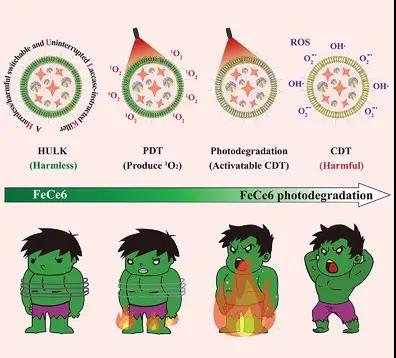Jiang Hulin AM, China Pharmaceutical University: A harmless-harmful switchable continuous laccase (LAC)-mediated killing strategy for activatable chemokinetic therapy


Chemokinetic Therapy (CDT) uses Fenton reaction catalyst to kill tumor cells by converting hydrogen peroxide (H2O2) in cells into hydroxyl radicals (OH•). Although there are many studies on supplementing H2O2 to improve the therapeutic effect of CDT, there are few studies focusing on the application of superoxide radicals (O2−•) in CDT, which may lead to better therapeutic effects. One of the main problems with O2-•mediated CDT is that it may induce severe oxidative damage to normal tissues, which can be solved by using degradable O2-• scavengers. Here, Jiang Hulin of China Pharmaceutical University constructed a harmless-harmful switchable continuous laccase (LAC)-mediated killing strategy (HULK), which is the first LAC-mediated acceleration of O2−• production The CDT reagent, due to the photodegradation of the O2−• scavenger FeCe6, has a harmless-harmful switchable effect.
LAC-mediated substrate oxidation can effectively catalyze the production of O2−• in cells, thereby promoting the conversion of Fe3+ to Fe2+, accelerating the production of OH•, and inducing tumor cell apoptosis and necrosis. The O2−• scavenger FeCe6 is rapidly photodegraded during the radiation process, and LAC-mediated O2 −• generation realizes activatable CDT therapy. This study not only proposed for the first time the LAC-mediated O2−• generation strategy, but also provided new insights for the treatment of activatable CDT.

Tian-Jiao Zhou, et al. A Harmless–Harmful Switchable and Uninterrupted Laccase-Instructed Killer for Activatable Chemodynamic Therapy, Adv. Mater., 2021.
DOI: 10.1002/adma.202100114
18915694570
Previous: Overview of Dr. Ihsanu


